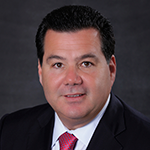
VP of HR
Company:
Physiotherapy Associates
Location: Exton, PA
When I came here in 2010, we were in turnaround mode, having resolved to restructure both the company and my department. We wanted to break down the silos in HR to align ourselves with operations and the business. I was asked to build a strong talent management function. HR was not viewed as a business partner. It was isolated, and it wasn’t fully aligned with the business. The first thing I did was look at the full life cycle of an employee within Physiotherapy Associates and structure the HR team to optimize each phase of the life cycle.
In order to successfully execute the business strategy, I knew HR had to be a business partner. Our task was to establish and implement a plan to drive results forward. The first step was creating a rich talent pipeline. Knowing that, we invested to make our university-relations program much more robust, because the employee life cycle starts before an individual joins the company. We now have contracts with more than 350 colleges and universities across the country, and we host hundreds of students for internships each year. Additionally, I built a strong recruitment team who took a proactive approach to hiring and staffing.
We focus on attracting and retaining top talent. We have recruiters and HR directors acting as HR business partners. They work with operations leaders at each level to align our team to support the operational structure of the organization. We drive results through people. This is accomplished through building clear career paths and providing attractive training, continuing education, competitive compensation, comprehensive benefits plans, and more.
Our HR team has an understanding of our employees’ key motivations. When I joined the organization we didn’t have a defined culture that could be clearly articulated, so we built the BeTheBest@Physio program, which ties everything we do to six core pillars. We create an environment that attracts, engages, and retains our associates. We make sure we are ready to provide necessary support to get the best results.
We have five regions led by regional VPs. The HR team has weekly calls with each regional VP and area VP to hear their needs, anticipate changes, and understand their goals. We align our programs to support that: If they have a recruiting issue, we adjust. If they have a training problem, we act. We determine where issues are and how to best resolve them in meaningful ways. My team knows the business and understands operations. We don’t function alone where we may be handcuffed by a policy. We know how to look at issues through the eyes of operations, and we are trained to be proactive by understanding what’s available in our toolbox to meet needs.
Physiotherapy’s growth strategy includes opening new clinics across the country, forming joint ventures, and acquisitions. With all the current and coming changes in health care, HR is playing an important role on these projects because we must have the right infrastructure in place and the right plan to recruit teams and onboard the right people to truly shape the organization.
There is one last important element to rebuilding HR: you have to know if it’s working. Four years ago, there were no real metrics in HR. There was a turnover report with no story behind it. We wanted to become an employer of choice, and we established key performance indicators to measure our ability to attract top talent, engage, and retain our greatest asset, our employees. We now measure engagement and retention, turnover numbers, and vacancy rates. We’ve discovered that our current vacancy rates beat national health care standards.
These efforts help move the company forward. When HR is done right, performance and engagement go up, and turnover goes down. We’re hitting the hot buttons of motivation and aligning HR with the business to bring rewards to our associates and the organization at the same time.

